Pennsylvania is home to two major cities, Philadelphia and Pittsburgh along with having 20 US National Parks in Pennsylvania. There is truly a little bit of everything to do in the Keystone State.
There is 1 National Forest, 20 State Forests, 116 State Parks, and 294 sections of State Game Lands. We are only going to cover the Pennsylvania National Parks in this article.
Pennsylvania has a thriving population of black bears, white-tailed deer, and many other wildlife you may see in one of the parks. The Appalachian Trail runs for 229 miles across the state.
From Gettysburg to the Declaration of Independence and the Liberty Bell there is a treasure trove of sites to see for history buffs.
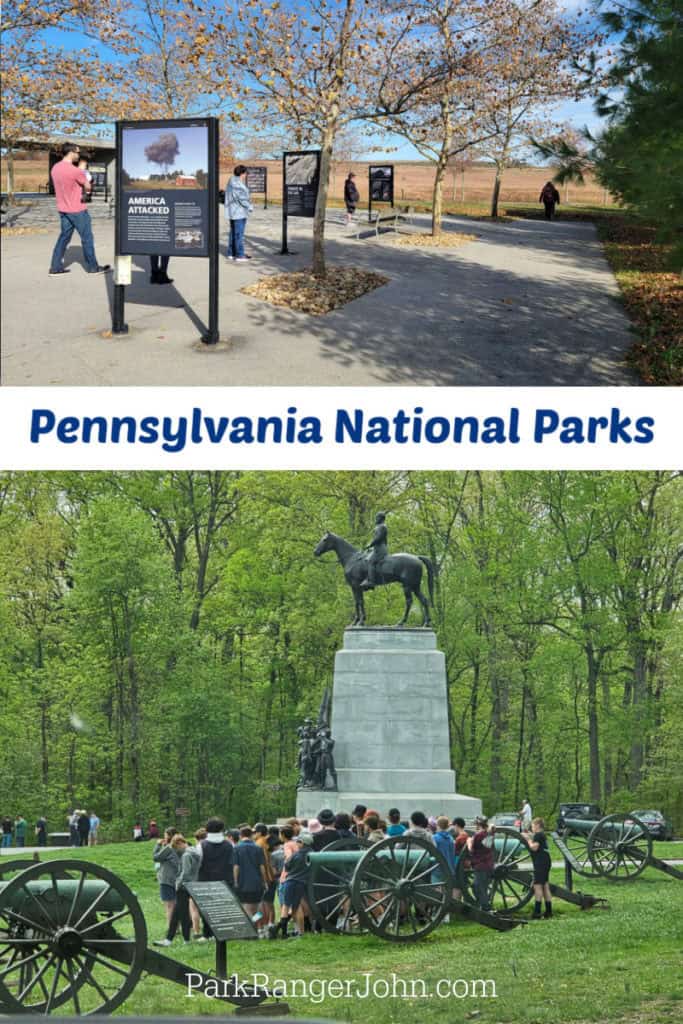
National Parks in Pennsylvania
Pennsylvania National Parks include multiple National Historic Sites and Historical Parks. There are also National Memorials, battlefields and more to explore in Pennsylvania.
The Carlisle Federal Indian Boarding School National Monument is one of the newest National Park Service sites established in December 2024.
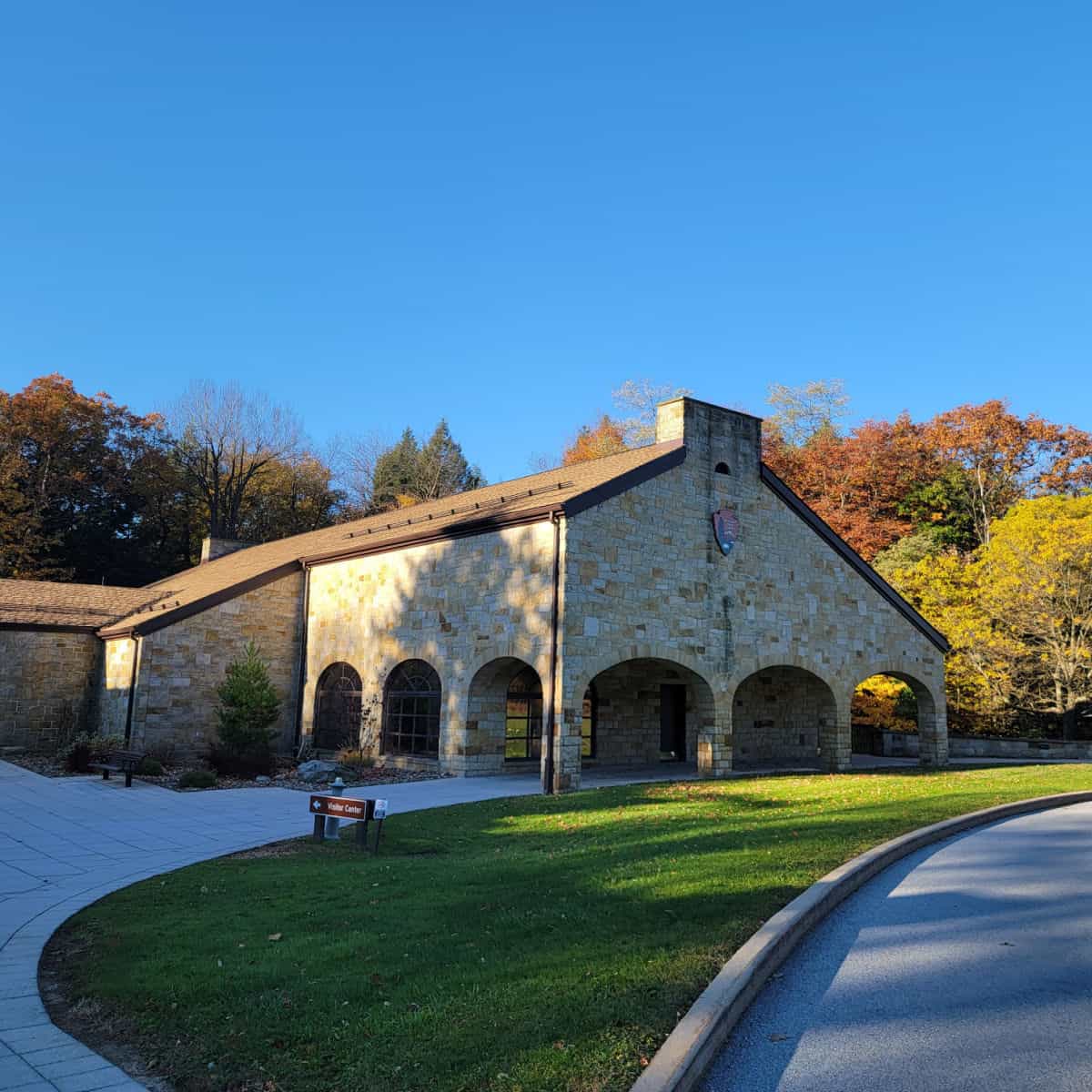
Allegheny Portage Railroad National Historic Site
Top Things to do - View exhibits and the park film, Visit Engine House 6 Exhibit Shelter, Hiking and Biking, Visit the Lemon House Tavern, Join a Ranger Led Program, Guided Heritage Hikes, Annual Living History Day
Lodging -There are no lodging facilities within the park. If you're looking for lodging near the Allegheny Portage Railroad National Historic Site, there are various accommodation options to choose from, including hotels, inns, and vacation rentals. Some nearby places to consider staying include hotels in the nearby town of Ebensburg, Pennsylvania, which is about a 20-minute drive from the historic site. Another option is to explore accommodations in the city of Johnstown, which is roughly a 30-minute drive away.
Camping - There are no camping options within the Historic Site.
Park Address - 110 Federal Park Road, Gallitzin, PA 16641
Allegheny Portage Railroad NHS is located in Western Pennsylvania approximately 80 miles east of Pittsburg. The site offers the opportunity to visit an engine house, tavern, historic railroad tunnel, and bridge.
During the 1820s the United States was moving Westward but transportation was definitely not what it is now. The Allegheny Mountains in Pennsylvania presented a major problem for railroads. The locomotives of the 1820s could not handle the steep grades of the mountains.
The Pennsylvania Main Line of Public Works attacked this problem by building the Allegheny Portage Railroad. This railroad was built with ten inclined planes equipped with rollers and a stationary engine to pull freight and passengers up and down the mountains.
From 1834 to 1854 this system was the best way to cross over the Allegheny Mountains until locomotives improved and were able to do it on their own. Visitors can still see the remains of this impressive system and learn about the impact of the railroad on westward expansion and the underground railroad.
You can also visit the Lemon House which was a tavern for travelers that has been restored to look like it is still the 1820s. You can also visit Staple Bend Tunnel which was the United State's first railroad tunnel.
Appalachian National Scenic Trail
Top Things to do - Thru-hiking, Visit the Appalachian Trail Museum in Gardners, Wildlife Viewing, Picnicking, Day Hiking, Enjoy Scenic Overlooks
Lodging - Along the Appalachian Trail in Pennsylvania, there are several designated shelters and campsites for thru-hikers and backpackers. These are typically available on a first-come, first-served basis and are free of charge.
Camping - Many state and national parks near the trail offer camping facilities. Check out nearby state parks like Pine Grove Furnace State Park for camping options
229 miles of the Appalachian Trail passes through Pennsylvania. With an elevation from 280 feet up to 2,080 feet you can expect some flat areas but also some steep descents and ascends.
Portions of the trail in Pennsylvania are considered some of the easiest walking in the entire 2,180 miles of the Appalachian Trail.
If you plan on hiking in the fall make sure you are aware of which areas cross state game lands and hunting season. You may also want to pick up this topographic map of the trail through Pennsylvania.
Carlisle Federal Indian Boarding School National Monument
This new Pennsylvania National Park Service Site was established on December 9, 2024 by President Biden.
The park is located on an active military base. There are currently no visitor services.
Address - 870 Jim Thorpe Road, Carlisle Barracks, Pennsylvania
Delaware Water Gap National Recreation Area
Top Things to do - Kayaking, Canoeing, Bicycling, Enjoying the Waterfalls, Camping, Hiking, Picnicking, Hunting, Fishing, Becoming a Junior Ranger, Enjoying a Scenic Drive
Lodging - There are no traditional lodging facilities within the NRA
Camping - The Delaware Water Gap National Recreation Area offers various camping options. River Camping is ideal for those looking to camp along the Delaware River, where you'll need a boat or canoe to access these sites. There are 62 primitive campsites in five zones, each with a different number of sites and river miles, and reservations are required, which can be made online. Backcountry Camping is tailored for Appalachian National Scenic Trail hikers, accommodating through-hikers, those hiking for two or more consecutive days. Additionally, Group Camping is available for those planning a camping trip with a large group of friends or family.
Park Address - 1978 River Road, Bushkill, PA 18324
The Delaware River flows along the border of Pennslyvania and New Jersey. The Delaware Water Gap NRA protects 40 miles of one of the last free-flowing rivers in the eastern United States.
The river is a great place to enjoy canoeing, kayaking, rafting, swimming, and fishing. You can rent equipment from authorized outfitters along the river and set up shuttles to pick you up. There are also over 100 miles of hiking trails including 27 miles of the Appalachian Trail that pass within the park.
Edgar Allen Poe National Historic Site
Top Things to do - Decipher the Code in Poe's Head, Poe-se with the Raven, Take a Tour of the Poe House, Visit the Reading Room,
Lodging - While the Edgar Allan Poe National Historic Site offers visitors a unique and enriching experience, it does not provide lodging options on-site. Visitors looking for accommodations in the area can explore nearby hotels, bed and breakfasts, or other lodging choices in Philadelphia, Pennsylvania, as it is located within the city.
Camping - There are no camping options at the Edgar Allan Poe National Historic Site itself, as it is a historic site located in a urban area in Philadelphia, Pennsylvania. Visitors interested in camping can explore camping sites available in nearby parks and campgrounds, such as those within the Pennsylvania state park system or other outdoor recreational areas in the region. The city of Philadelphia offers a multitude of historical and cultural attractions, and there are various camping options available a bit further out from the city if you want to combine your visit to the Edgar Allan Poe National Historic Site with a camping adventure.
Park Address - 532 N. 7th Street, Philadelphia 19123
Edgar Allen Poe NHS is located in Philadelphia. The park offers the opportunity to tour Edgar Allen Poe's house and view a park film about his life.
Edgar Allen Poe is one of the greatest names in horror and macabre (disturbing or horrifying because of the description of death or injury) writing. Poe has been credited as being the inventor of detective stories.
He wrote some of his most famous works while living in Philadelphia. In early 1843 he lived in the house that is the site of the National Park. It is the only one of his residences that still survives. You are greeted with a symbolic raven statue as a reminder of the poem "The Raven".
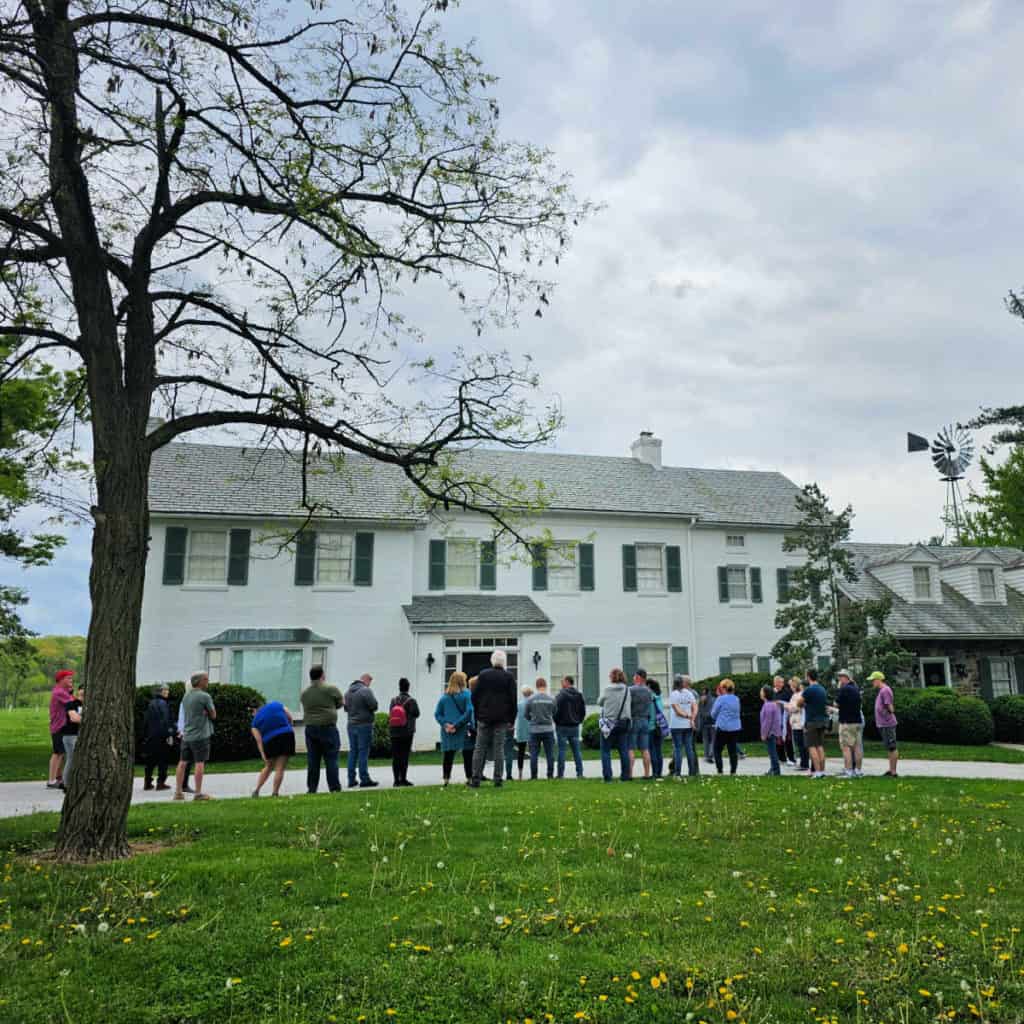
Eisenhower National Historic Site
Top Things to do - Tour the Eisenhower Home, Visit the Eisenhower Farm, Become a Junior Ranger, Join the Boy Scout Program, and World War II Weekend.
Lodging - There are no lodging options within the Historic Site
Camping - There are no available campgrounds within the park
Park Address - 250 Eisenhower Farm Road, Gettysburg, PA 17325
Eisenhower NHS is located in South-central Pennsylvania approximately 40 miles southwest of Harrisburg. The park offers the opportunity to tour Eisenhower's home and enjoy a walking tour of the grounds.
Dwight D Eisenhower and his wife Mamie bought a farm in Pennsylvania near the Gettysburg. The Eisenhowers retired to the farm in 1961 after his two-term presidency from 1953 to 1961. President Eisenhower passed away in 1969 at the age of 78. Mrs. Eisenhower continued to live on the farm until she passed away in 1979.
In 1980 the National Park Service opened the park as a National Historic Site allowing visitors to learn more about Eisenhower's farm and life. There is limited parking at the park so visitors need to purchase shuttle passes and schedule tours at the Gettysburg Visitor Center!
First State National Historical Park (DE, PA)
Top Things to do - Fishing, Visit Brandywine Valley, Biking, Picnicking, Bird Watching, Horseback Riding
Lodging - While there are no lodging options within the park itself, visitors can find various accommodations in the nearby areas of Delaware and Pennsylvania, depending on their specific interests and locations of interest within the park. From Wilmington to the Brandywine Valley and even Philadelphia, there are diverse options for lodging to suit different preferences and budgets.
Camping - There are no campgrounds within First State National Park.
Park Address - 211 Delaware Street, New Castle, DE 19720
First State NHP is located in four different sites in Pennsylvania and Delaware. One of these units is located in southern Pennsylvania. Woodlawn Tract is more than 1,100 acre in Northern Delaware and Southern Pennsylvania.
The park site sits next to Brandywine State Park and has trails for hiking and horseback riding along with the opportunity to see historic Quaker houses.
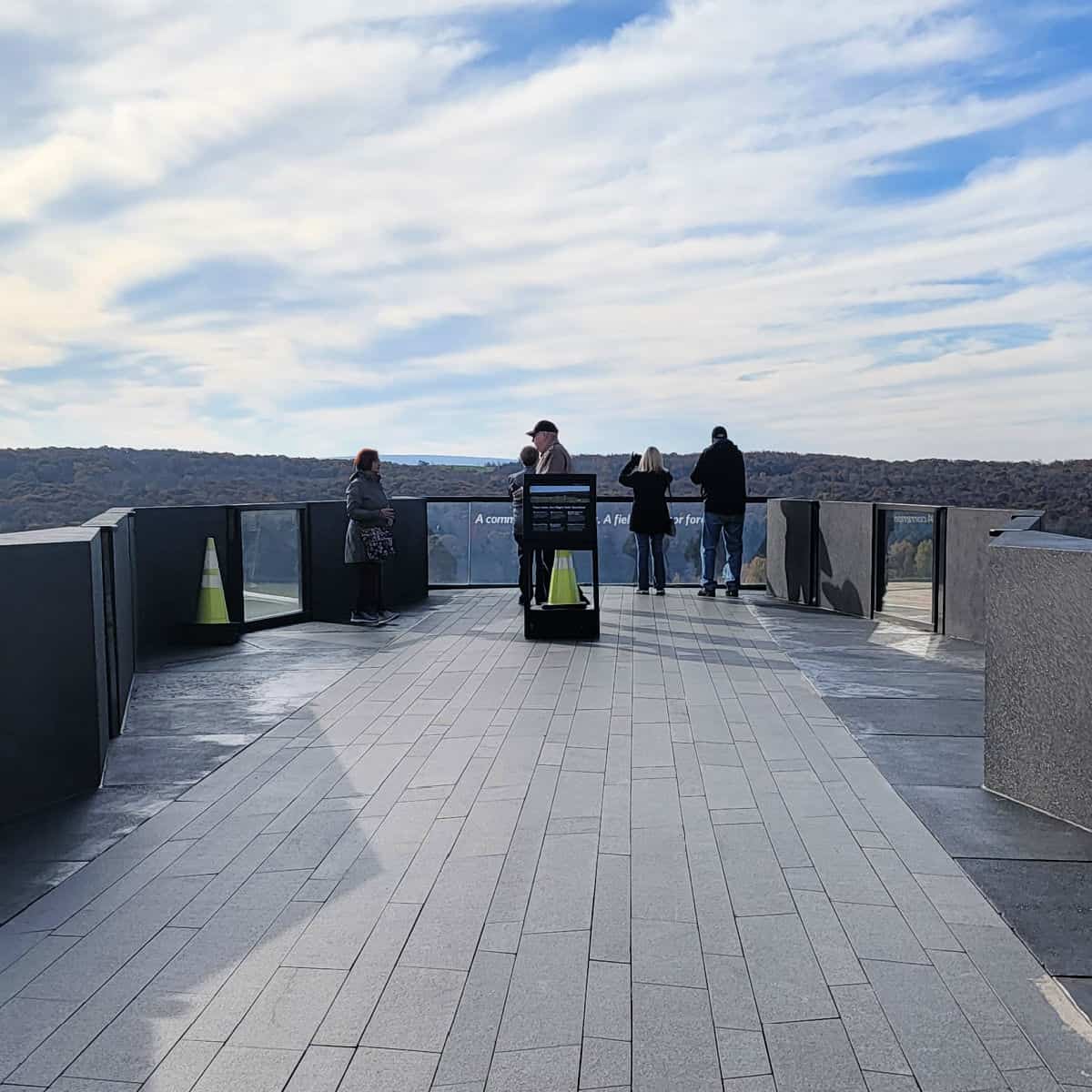
Flight 93 National Memorial
Top Things to do - Attend the annual September 11 Observance, Join the Junior Ranger Program, Join a Park Ranger at the Tower of Voices, Hike the Memorial Trails
Lodging - There are no National Park Lodges within the park.
Camping - There are no campgrounds within the park.
Park Address - 6424 Lincoln Highway, Stoystown, PA 15563
The Flight 93 Memorial is located in Southwestern Pennsylvania approximately 90 miles southeast of Pittsburg. The site offers the opportunity to view the crash site of Flight 93 and the Memorial.
On September 11, 2001, hijackers took control of four commercial airlines and used them as weapons. United Flight 93 flying from Newark to San Francisco was hijacked when passengers learned about the other attacks and tried to overcome the hijackers.
During the struggle to regain control of the plane the airliner crashed in rural Somerset County killing everyone on the plane. The Flight 93 memorial was dedicated in 2011 and protects the 40-acre crash site of fields and woods.
The crash site is only open to family members of victims. The Memorial Plaza borders the northern edge of the site and can be accessed from the visitor center. There is a Wall of Names built of 40 white inscribed marble panels honoring the victims.
Visitors can look through a wooden gate to the point of impact that is marked by a large boulder near the treeline.
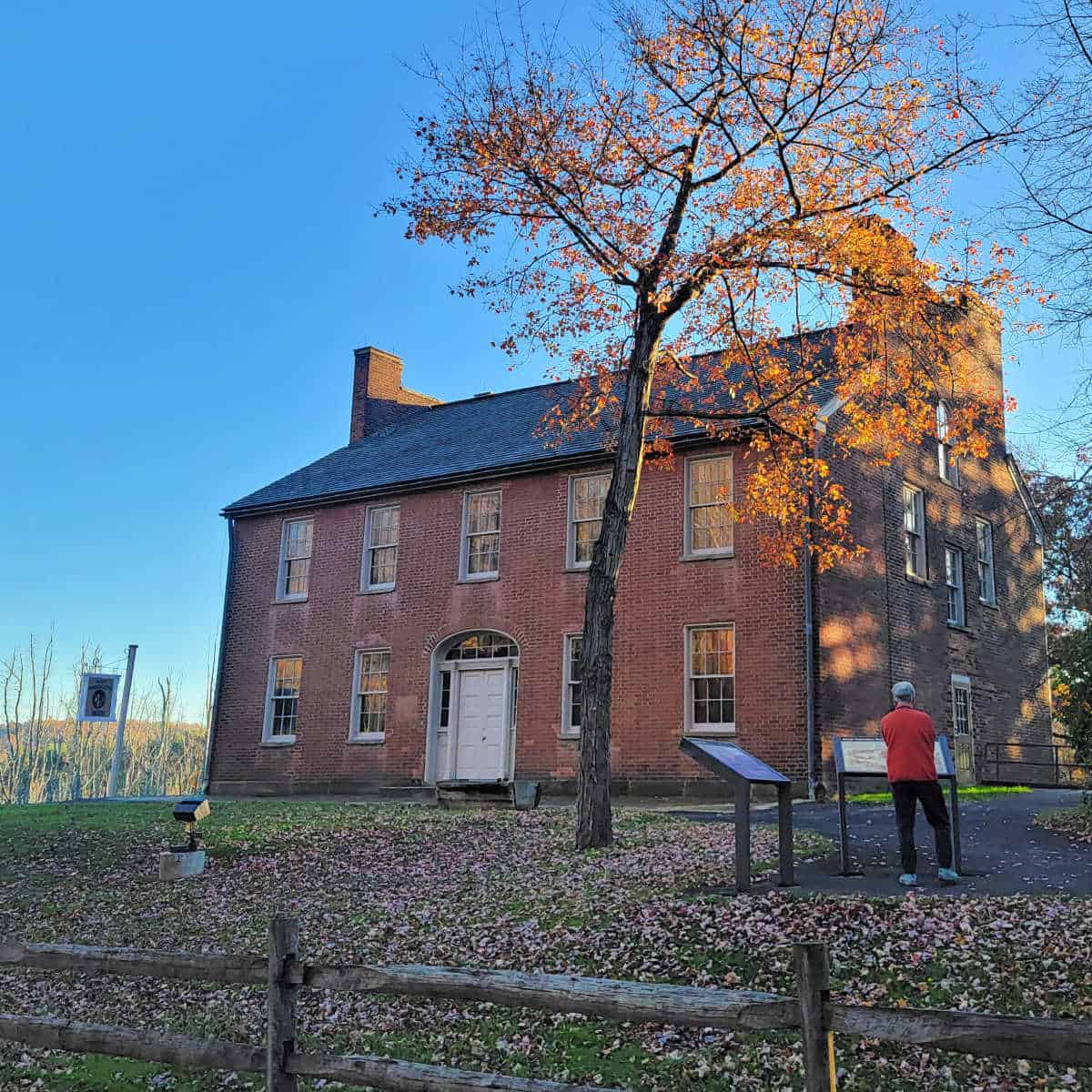
Fort Necessity National Battlefield
Top Things to do - Join the Junior Ranger Program, Watch Road of Necessity in the Visitor Center, Historic Weapons Demonstrations, Hike the Fort Necessity Trails, Take a Self-guided Battlefield Tour
Lodging - There is no lodging available inside the park.
Camping - Fort Necessity NB does not have a public campground. There are a number of public and private campgrounds near Fort Necessity National Battlefield.
Park Address - 1 Washington Parkway, Farmington 15437
Fort Necessity National Battlefield is located in Southwestern Pennsylvania approximately 60 miles southeast of Pittsburg. The park offers the opportunity to view battle sites and a reconstructed fort.
Fort Necessity Battlefield protects the Great Meadows site and features a reconstruction of the fort built by George Washington in 1755. The park has a film that interprets the importance of the site.
George Washington was 22 when he was in the area in 1754. He was in charge of British Troops sent to the area to build a military road in response to the French trying to move into British territory.
He made camp in an area called Great Meadows and soon engaged in skirmishes with French troops. He returned to the area a year later and built Fort Necessity. The fort was attacked by French soldiers and their Indian allies causing George Washington to retreat from the area.
This was the beginning of the French and Indian War which lasted until 1763.
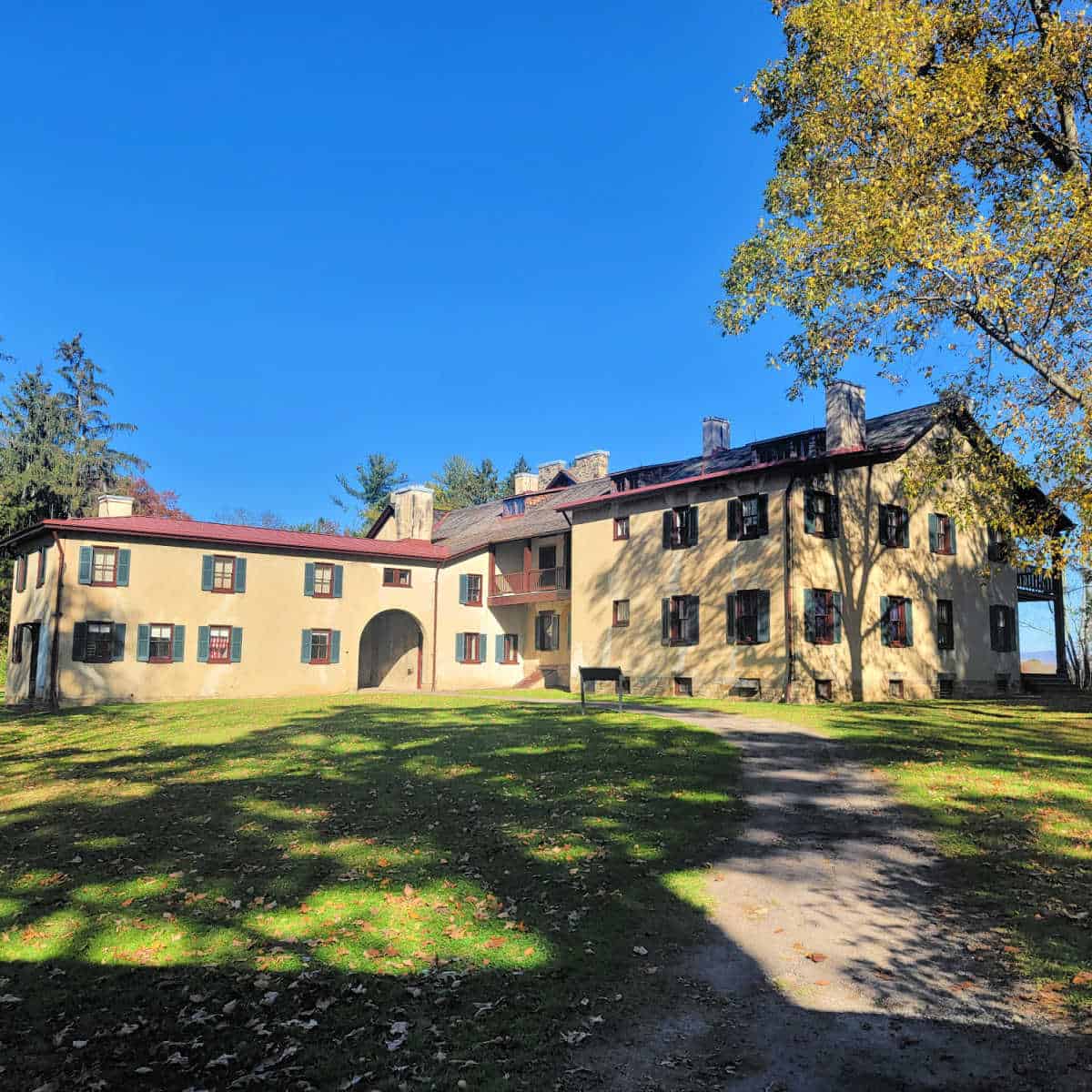
Friendship Hill National Historic Site
Top Things to do - Hike the Friendship Hill Loop Traill, Join the Friendship Hill Senior and Junior Ranger, Tour the Gallatin House
Lodging - There is no lodging at Friendship Hill National Historic Site. Lodging is available nearby in Morgantown, WV, Uniontown, PA, and Waynesburg, PA.
Camping - There is no camping within the Historic site.
Park Address - 223 New Geneva Rd. Point Marion, PA 15470
Friendship Hill NHS is located in Southwestern Pennsylvania approximately 55 miles southeast of Pittsburg. The park offers the opportunity to tour historic homes, a cell phone tour and more than 10 miles of hiking trails.
Albert Gallatin immigrated to America from Geneva, Switzerland in 1780 at the age of 19. He bought land and built a house that he called Friendship Hill in honor of his business partner friends. Mr. Gallatin entered into local politics to help with his businesses.
He served in the Pennsylvania State Legislature before being elected to the U.S. Senate. He was removed from his seat in the senate due to failure to meet citizenship requirements. He was then elected to the House of Representatives where he became a party leader. He helped elect Thomas Jefferson as President in 1800.
Mr. Gallatin was appointed as the Secretary of Treasury and served for 13 years which is the longest anyone has held this position. He helped finance the Louisiana purchase, the National Road and Lewis and Clark's expedition.
When he left the treasury he served as the U.S. Minister to both France and England then went on to help found New York University.
The park was created to preserve his home and tell the story of his accomplishments. You can still see parts of the house that date back to the 1780s along with the additions that were done in the early 20th century.
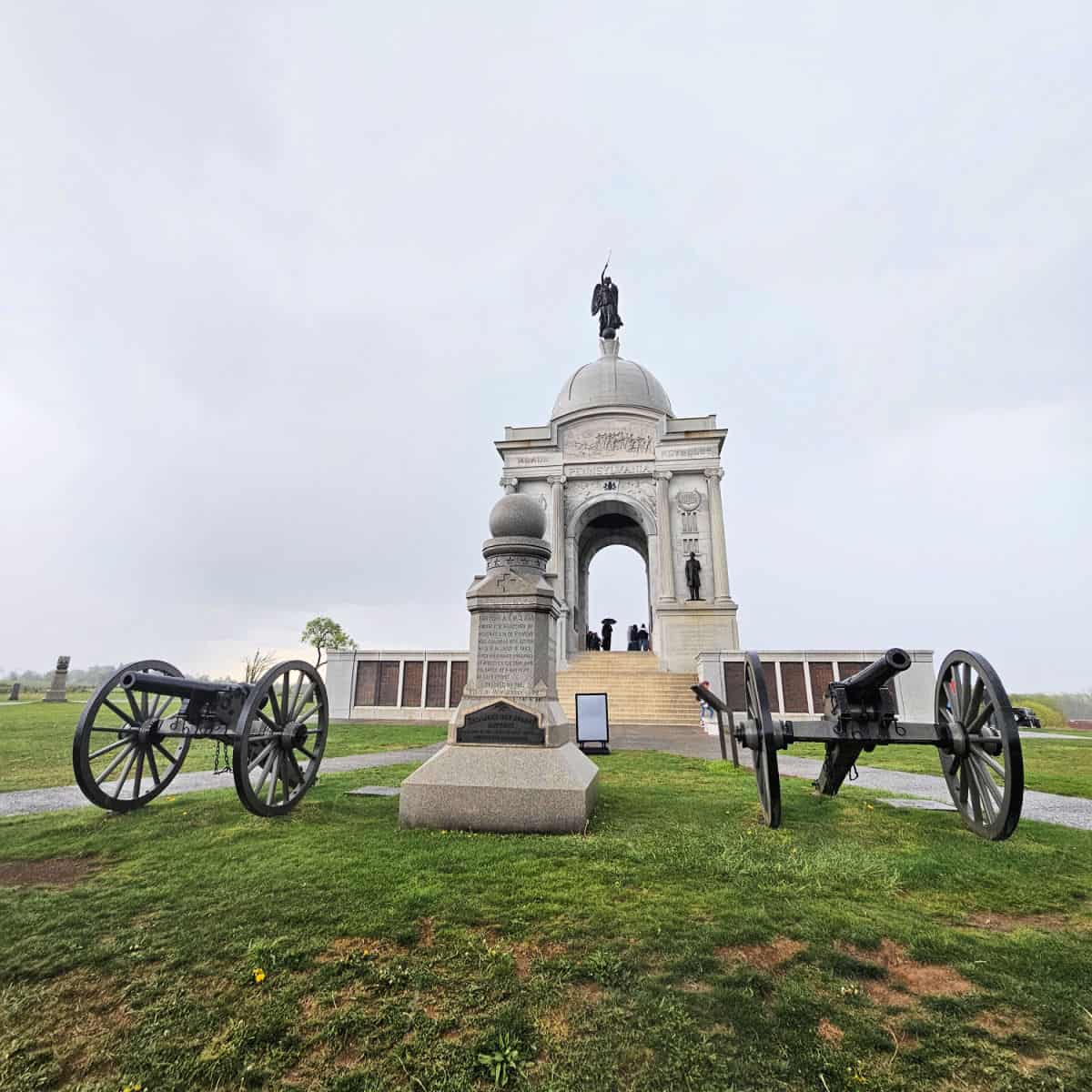
Gettysburg National Military Park
Top Things to do - Gettysburg Battle Walks, Campfire Programs, Junior Ranger Program, Living History Programs, Horseback Riding
Lodging - The Historic Bushman House is currently closed until further notice.
Unfortunately, there is no lodging option within the park boundaries, as the park does not have any campgrounds or facilities for overnight stays. However, there are many hotels and motels nearby that you can choose from, depending on your budget and preferences.
Camping - The park itself does not offer campgrounds, but there are nearby campgrounds where visitors can stay.
Park Address - 1195 Baltimore Pike, Gettysburg 17325
Gettysburg National Military Park is located in Southern Pennsylvania approximately 60 miles northwest of Baltimore. The park offers the opportunity to take an auto tour of the Gettysburg battlefield and cemetery.
The Battle of Gettysburg is considered the bloody turning point of the civil war. The Battle of Gettysburg occurred on July 1, 1863, when Confederate General Robert E. Lee led his forces into Pennslyvania and they met the Army of the Potomac lead by Major General George Gordon Meade.
The battle lasted for three intense days with more than 160,000 soldiers involved. At the end of the battle there were 51,000 casualties making it the bloodiest battle of the entire Civil War. General Lee was forced to retreat after a finale attempt on July 3rd now known as Pickett's Charge.
Gettysburg National Military Park was established in 1895. Today visitors can view more than 1,300 monuments, markers, and memorials along with visit the park's visitor center. There is a 24-mile auto tour that incorporates 16 stops at locations that include the Wheatfield, Site of Pickett's Charge, the Eternal Light Peace Memorial and the National Cemetery.
Gloria Dei Church National Historic Site (Affiliated Site)
Top Things to do - Look for Models of the ships Fogel Grip and Kalmar Nyckel, the Bronze Church Bell that was cast in 1806 and the Episcopal Church's flag. Explore the churchyard and the Hendrickson House museum, which showcases the life of early Swedish colonists, Visit the graves of numerous members of George Washington's army, the naturalist Alexander Wilson, Learn about the history of the church and its congregation.
Lodging - Gloria Dei Church National Historic Site in Philadelphia does not offer lodging on its premises. Visitors can find various accommodation options, including hotels, bed and breakfasts, and more, in the surrounding areas of Old City, Center City, and Society Hill.
Camping - There are ano camping options within the Historic Site
Park Address - 916 S. Swanson Street, Philadelphia 19147
Gloria Dei Church NHS is located in Philadelphia. The park offers tours of the historic church and cemetery.
Gloria De Church is also known as the Old Swedes' Church. It was built beginning in 1698 and even with additions and renovations, the church has changed little since 1846. The brick building shows multiple architectural styles including Gothic, Georgian and traditional Swedish.
The church is still a working church so you will want to check for their current schedule before visiting. Inside the church, you can see a model of the ships that brought the original colonists to America from Sweden, a 1731 baptismal font, a bronze bell cast in 1801 using metal from a 1643 bell, and a carving of the angel Gabriel similar to those found in churches in Sweden.
Hopewell Furnace National Historic Site
Top Things to do - The first stop should be at the park's Visitor Center, Self-Guided Tour, Living History Programs and Demonstrations, Picnicking, Hiking, Watching Wildlife, Become a JunioRanger, Apple Picking
Lodging - While the historic site itself does not offer lodging, there are several lodging options available in the surrounding area, including Elverson and nearby towns.
Camping - No campgrounds are available within Hopewell Furnace NHS. If you prefer a more outdoorsy experience, you can explore nearby campgrounds, such as French Creek State Park, where you can camp in tents or RVs.
Park Address - 2 Mark Bird Lane, Elverson, PA 19520
Hopewell Furnace NHS is located in Southeastern Pennsylvania approximately 15 miles southeast of Reading. The park offers the opportunity to see a restored "iron plantation", watching living history demonstrations and apple picking.
Mark Bird established an ironmaking operation called Hopewell Furnace in 1771. He took advantage of the local ore, having a water source and abundance of trees that provided charcoal fuel. Hopewell Furnace operated until 1883 when steel production made ironmaking obsolete.
The interesting thing about Hopewell Furnace is it wasn't just the ironmaking site it was an entirely self-contained community that included the worker's houses, a community store, church, apple orchard, and other facilities. The area was called an "iron plantation" because of the similarities to a plantation that grew crops.
Hopewell Furnace produced items like stoves and grates but during the Revolutionary War, they also produced cannons, shots, and shells for the Continental Army.
Today you can take a self-guided walking tour that leads you past the cold blast iron furnace, the ironmasters house, the community store, the blacksmith's shop, and the 1782 Bethesda Church.
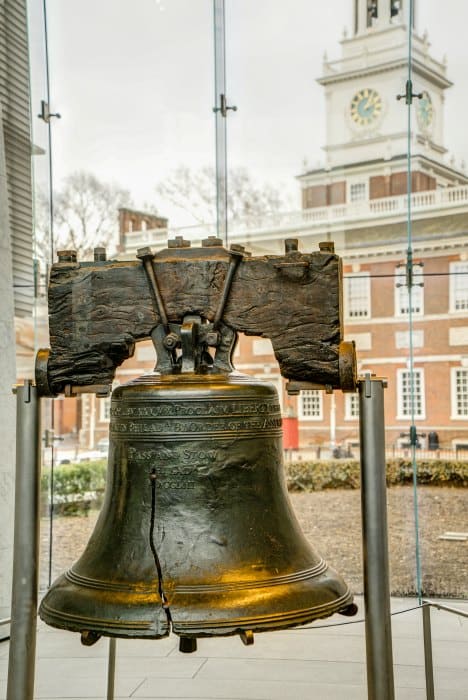
Independence National Historical Park
Top Things to do -Tour Independence Hall, Become a unior Ranger, Find the Unusual "s" in the Documents, Hear the Centennial Bell Ring, Listen for the Sound of Sticky Ink, Play the Virtual Glass Armonica, Pose Like "The Signer", Stand in Abraham Lincoln's Place, Take a "Bell-fie", Walk in Ona Judge's Footsteps
Lodging - The Thomas Bond House, a restored 18th century home now open as a Bed and Breakfast, sits adjacent to Welcome Park on the eastern end of Independence National Historical Park.
Camping - There are no camping options within the park
Park Address - 599 Market Street, Philadelphia, PA 19106
Independence NHP is located in downtown Philadelphia in the Old City. The site offers the opportunity to view sites related to the historic events of the American Revolution.
More than two dozen locations that played a role in the Colonies quest for independence can be visited. In the late 18th century Philadelphia was the most populated city in Colonial America. It was the center for advocating independence from the British. The First and Second Continental Congress met, the Declaration of Independence was signed and read to the public for the first time, the Articles of Confederation and the Constitution of the United States of America were debated and signs here.
The U.S. Congress met in Philadelphia for a decade and the Liberty Bell rang here. Historic figures like John Adams, George Washington, Patrick Henry, Benjamin Franklin, Thomas Jefferson, and John Hancock met and debated early American issues.
You will want to start your visit at the Independence Visitor Center which is a partnership between the National Park Service and local tourist sites. You can pick up information on the different sites, watch the park film, and sign up for guided tours. Tickets are available here for tours of Independence Hall. You will need a ticket in order to visit Independence Hall so make sure to stop in and get one.
Sign up for a Founding Fathers Historical Walking Tour and learn the history of landmarks like the Liberty Bell, Independence Hall, Betsy Ross House and more
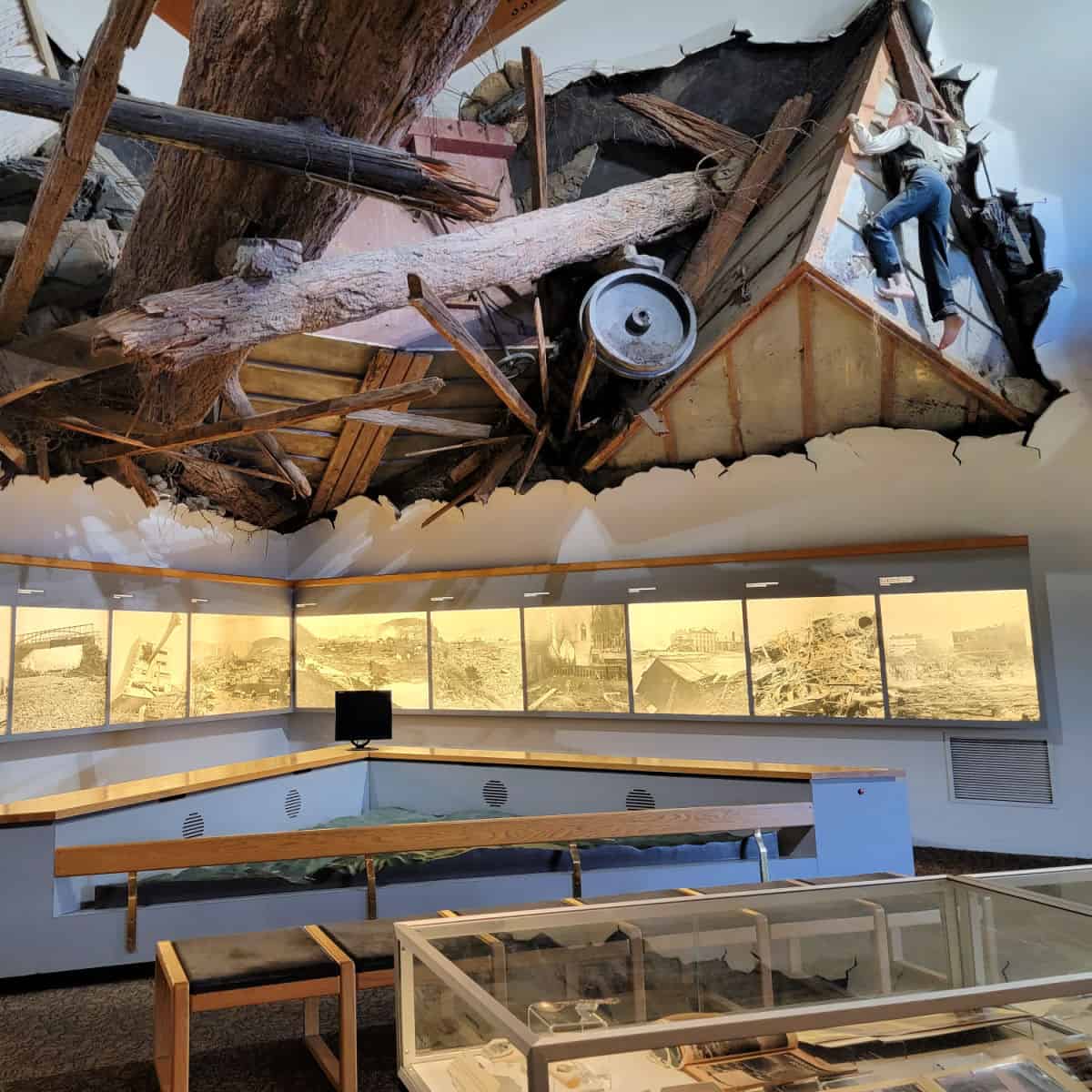
Johnstown Flood National Memorial
Top Things to do - Learn about the Johnstown Flood in the Visitor Center, View the park film "Black Friday.", Join the Junior Ranger Program, Drive past the Club House and Cottages (Scenic Driving), Visit the remains of the South Fork Dam, Attend a Tales of the Great Flood Presentation, Attend an Evening on the Lake Presentation, Have lunch at the picnic area (Picnicking), Join the Summer Programs
Lodging - There are no National Park Lodges within the park.
Camping - There are no campgrounds within the park.
Park Address - 733 Lake Road, South Fork, PA 15956
Johnston Flood National Memorial is located Southwestern Pennsylvania approximately 70 miles east of Pittsburg. The site offers the opportunity to view the park film, tour the old dam site and structure and view exhibits.
On May 31, 1889, the South Fork Dam gave way releasing 20 million tons of water downstream in a wall of water up to 40 feet high. The problems started on May 30th when heavy rains caused streams to overflow into streets.
The town of Johnstown was located at the confluence of the Little Conemaugh and Stonycreek Rivers. The South Fork Dam was located 14 miles upstream on the Little Conemaugh River. The dam formed a 450-acre reservoir called Lake Conemaugh. The dam and lake were owned by the South Fork Fishing and Hunting Clubs whose members included Andrew Carnegie, Andrew Mellon, and Henry Clay Frick.
The earthen dam was not able to hold the influx of water from the rain. On May 31st shortly after 3 pm the dam gave way. Several small towns were destroyed including Johnstown. Within minutes of the water reaching the town more than 4 square miles of the town was obliterated killing more than 2,200 people.
This disaster brought help from around the United States and other countries including the newly founded American Red Cross. Clara Barton had started the American Red Cross eight years earlier. She came to the area on June 5th to help supervise the recovery.
Today you can visit the site of the former South Fork Dam. The park has a film depicting the events from 1889. You can also walk to the remains of the dam and look out over the old lake bed.
Lower Delaware National Wild and Scenic River
Top Things to do -Boating, Fishing, Hiking, Biking, Picnicking, Sightseeing and see a variety of natural and historical sites along a scenic drive.
Lodging - The Lower Delaware National Wild and Scenic River, spanning parts of New Jersey and Pennsylvania, doesn't provide lodging facilities on-site. Visitors can find various lodging options in nearby towns and areas like New Hope and Lambertville (PA), as well as Stockton (NJ).
Camping - There are no camping options within the park. If you prefer a more outdoorsy experience, you can explore camping options in nearby state parks and campgrounds.
Park Address - 1234 Market Street, Philadelphia 19107
The Delaware River is the largest free-flowing river in the Eastern United States. The park was established in 2000. You can enjoy boating, scenic drives and more!
Points of interest within the park include:
- National Canal Museum
- Delaware Canal
- Riegelsville Historic District & Benjamin Riegel House
- Tinicum Park
- Ralph Stover State Park
- Tohickon Valley Park
- Honey Hollow Watershed National Historic Landmark
- Phillips Mill
- Parry Mansion
- Washington Crossing Historic Park
North Country National Scenic Trail (New York to North Dakota MI, MN, ND, NY, OH, PA, VT, WI)
The North Country National Scenic Trail was established as a National Park Service Site on November 16, 2023.
The trail traverses eight northern states offering the opportunity to enjoy historic and cultural areas, birdwatching, and so much more.
Potomac Heritage National Scenic Trail
Top Things to do - Hiking, Bicycling, Paddling, Explore The Laurel Highlands Hiking Trail and The Great Allegheny Passage
Lodging - There are many lodging options available along or near the GAP, depending on your preferences and budget.
Camping - There are campgrounds along or near the Potomac Heritage.
Park Address - c/o Chesapeake and Ohio Canal National Historical Park, 142 W. Potomac St., Williamsport 21795
The Potomac Heritage NST links the tidal Potomac and upper Youghiogheny river basins. The Potomac Heritage Trail is a network of locally-managed trails and routes in Maryland, Pennsylvania, Virginia, and the District of Columbia. Currently, there is no visitor center for the trail.
The national scenic trail incorporates 710 miles of existing and planned trails managed by federal, state, local, and nonprofit entities. You can download a map of the PHT network to learn more about this trail system.
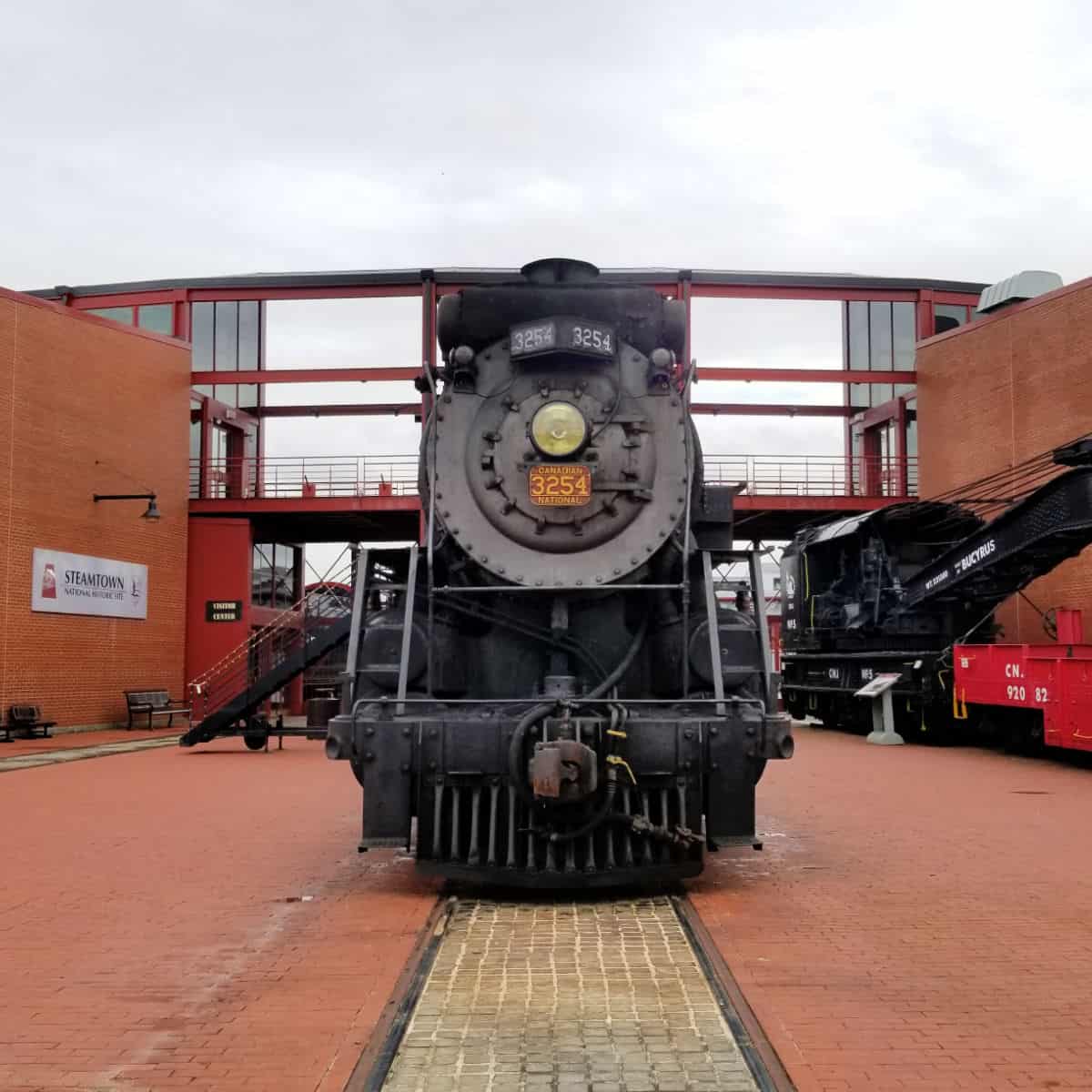
Steamtown National Historic Site
Top Things to do - Locomotive Shop Tours, Watch "Steel and Steam", Ride a Train, Discover the History of Steam, Explore the Roundhouse, Become a Junior Ranger, Become a Railroad Explorer
Lodging - Steamtown National Historic Site does not provide on-site lodging. You can find lodging options in and around Scranton, including hotels, motels, bed and breakfasts, vacation rentals, campgrounds, and accommodations in nearby towns like Clarks Summit or Wilkes-Barre.
Camping - There are no campgrounds within the park.
Park Address - 350 Cliff Street, Scranton, PA 18503
Steamtown NHS is located in Northeastern Pennsylvania near downtown Scranton. The park offers the opportunity to view historic locomotives and trail cars, guided train tours, and touring a working rail yard.
Steamtown NHS was created to preserve the history of the steam train and railroading in America. In 1918 there were more than 65,000 steam locomotives working in the United States on more than a quarter of a million miles of track.
The park focuses on 100 years from 1850 to 1950. Located within the Scranton Railroad Yard of the Delaware, Lackawanna and Western Railroad the park has an amazing collection of steam locomotives, passenger and freight cars.
You can view the 1941 Big Boy Union Pacific Locomotive and the 1903 Chicago Union Transfer Railway Company freight engine. Make sure and check the park's schedule for opportunities to ride on a steam-powered train.
Thaddeus Kosciuszko National Memorial
Thaddeus Kosciuszko National Memorial is located in downtown Philadelphia. The park offers the opportunity to learn more about Thaddeus Kosciuszko's life.
Mr. Kosciuszko was a close friend of Thomas Jefferson. He was motivated to come to America in 1776 inspired by the ideals of the Colonies struggle for independence from Britain.
He became a general in 1783 after putting his skills to use in engineering tasks fortifying locations within the Colonies. He was wounded in battle and imprisoned while trying to help Poland resist Russian domination.
He was exiled from Poland and returned to America in 1797. He lived in a boarding house in downtown Philadelphia that now houses the National Memorial. He stayed in the house for less than a year before returning to Europe.
You can view artifacts related to Kosciuszko and photographs of some of the monuments erected in his honor.
Upper Delaware Scenic and Recreational River
The Upper Delaware Scenic and Recreational River are located in southeastern New York and northeastern Pennsylvania. The park offers canoeing, rafting, and fishing.
The river forms the boundary between New York and Pennsylvania. Upper Delaware is the longest free-flowing stream in the Northeast. 73-miles of the river has been designated as the Upper Delaware Scenic and Recreational River but within this, the National Park Service only owns a small amount of land.
The Upper Delaware is managed through a partnership between federal, state and local agencies and private businesses. You can enjoy Class I and II rapids along with many flat areas perfect for spending a day on the water.
Valley Forge National Historical Park
Valley Forge NHP is located in Southeastern Pennsylvania approximately 20 miles from Philadelphia. The site gives you the opportunity to take a walking, trolly or auto tour of the winter resting area of George Washington's troops in the winter of 1777.
During December 1777 George Washington's Continental Army needed a place to camp and rest during the winter. The British army was occupying the patriot capital of Philadelphia.
George Washington decided to camp at a site called Valley Forge located 20 miles from Philadelphia. He chose the location because of the terrain which provided great defense along with it being far enough from British Troops to prevent a surprise attack.
Today you can visit and learn more about the significance of Valley Forge in the American Revolution. The park has a park movie, artifacts that have been recovered from the site, and historical exhibits.
You can take a self-guided 10-mile auto tour or a guided trolly tour that is offered seasonally for a fee.
List of National Parks in Pennsylvania
- Allegheny Portage Railroad National Historic Site
- Appalachian National Scenic Trail
- Carlisle Federal Indian Boarding School National Monument
- Delaware Water Gap National Recreation Area
- Edgar Allen Poe National Historic Site
- Eisenhower National Historic Site
- First State National Historical Park (DE, PA)
- Flight 93 National Memorial
- Fort Necessity National Battlefield
- Friendship Hill National Historic Site
- Gettysburg National Military Park
- Hopewell Furnace National Historic Site
- Independence National Historical Park
- Johnstown Flood National Memorial
- Lower Delaware National Wild and Scenic River
- North Country National Scenic Trail
- Potomac Heritage National Scenic Trail
- Steamtown National Historic Site
- Thaddeus Kosciuszko National Memorial
- Upper Delaware Scenic and Recreational River
- Valley Forge National Historical Park
There are 19 National Parks in Pennsylvania that receive over 10 million visitors a year. These visitors produce over $516 million in economic benefits from tourism.
Pennsylvania National Parks include 7 National Heritage Areas, 4 Wild and Scenic Rivers managed by the National Park Service, 5 National Trails, and 167 National Historic Landmarks.
Affiliated Areas
- Captain John Smith Chesapeake National Historic Trail (VA, MD, DE, DC, PA, NY)
- Chesapeake Bay Watershed (DC, MD, NY, PA, VA, WV)
- Delaware & Lehigh National Heritage Corridor
- Gloria Dei Church National Historic Site
- Oil Region National Heritage Area
- River of Steel National Heritage Area
- Schuylkill River Valley National Heritage Area
- Washington – Rochambeau National Historic Trail (MA, RI, CT, NY, NJ, PA, DE, MD, VA, DC)
There are over 3,400 National Register of Historic Places listings in Pennsylvania, along with 27 National Natural Landmarks, 1 World Heritage Site (See this list for all of the UNESCO World Heritage Sites in the United States), and 3,808 Places recorded by the heritage documentation program.
Pennsylvania National Parks also include over 13 million objects in the national park museum collection and over 1,200 archeological sites.
Check out this list of US National Parks in Alphabetical Order to see how many you have visited.
Additional National Park Travel Resources
The Constitutional Walking Tour of Philadelphia - on this tour, you will get a behind-the-scenes look at the Independence National Historical Park and more than 20 other historic sites on this 1.25 mile trek.
Click here to learn more/book your Constitutional Walking Tour of Philadelphia.
Revolution and the Founders: History Tour of Philadelphia - On this walking tour, you will follow a guide with a degree in history to the Liberty Bell, Independence Hall, and other noteworthy sights in America's Birthplace of Independence.
Click here to learn more/book your Revolution and the Founders: History Tour of Philadelphia.
2-Hour Gettysburg Battlefield Guided History Bus Tour with a National Park Guide- This 2-hour tour tells you about the phases os this three day battle, which was the turning point in the American Civil War. See sites like Devil''s Den, Little Round Top, the location of Pickett's Charge and more!
Click here to learn more/book your 2-hour Gettysburg Battlefield Guided History Bus Tour with a National Park Guide.
Learn more about National Park Passes for parks that have an entrance fee.
$80.00 - For the America the Beautiful/National Park Pass. The pass covers entrance fees to all US National Park Sites and over 2,000 Federal Recreation Fee Sites for an entire year and covers everyone in the car for per-vehicle sites and up to 4 adults for per-person sites.

Buy your pass at this link, and REI will donate 10% of pass proceeds to the National Forest Foundation, National Park Foundation, and the U.S. Endowment for Forestry & Communities.
National Park Free Entrance Days -Mark your calendars with the five free entrance days the National Park Service offers annually.

For a fun adventure check out Escape Campervans. These campervans have built in beds, kitchen area with refrigerators, and more. You can have them fully set up with kitchen supplies, bedding, and other fun extras. They are painted with epic designs you can't miss!
Escape Campervans has offices in Vancouver, Seattle, Portland, San Francisco, Las Vegas, Los Angeles, Phoenix, Salt Lake City, Denver, New York, and Orlando
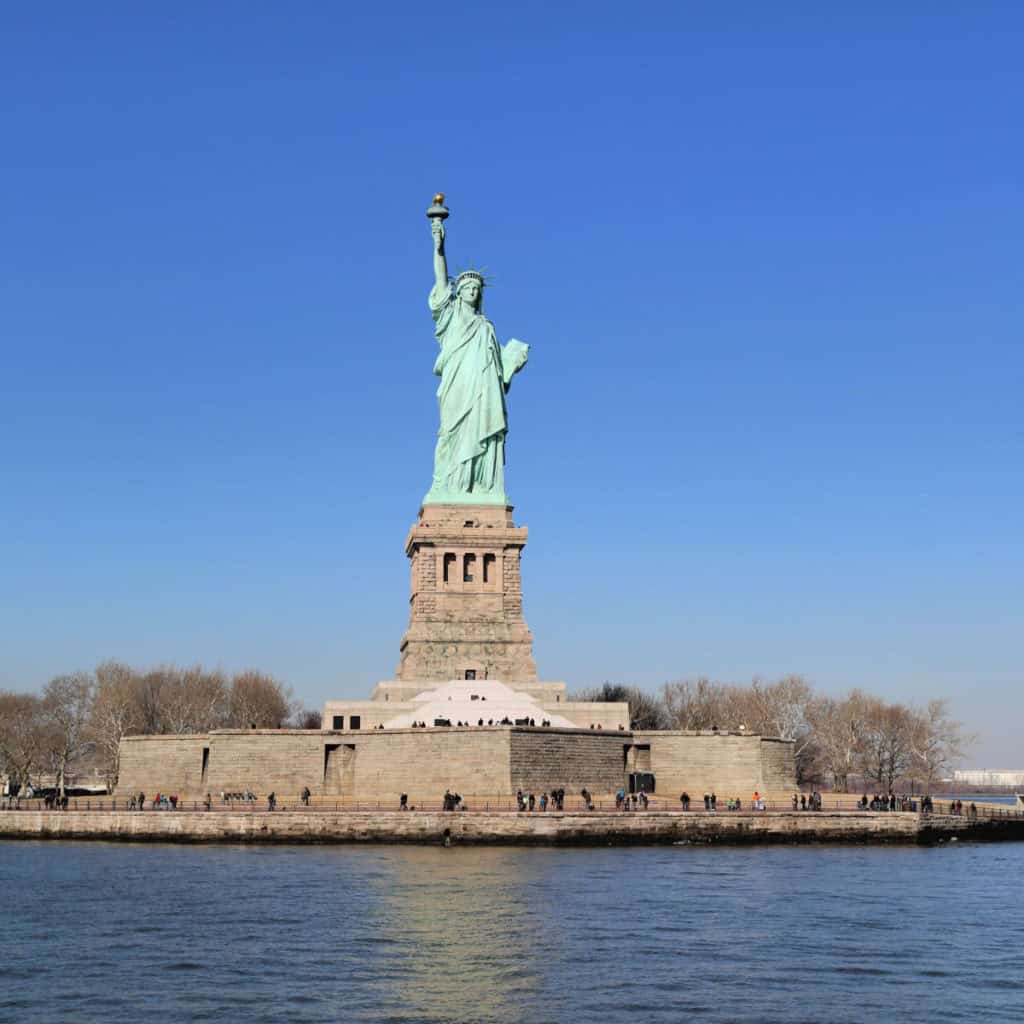
National Parks in neighboring states
National Parks in West Virginia
Make sure to follow Park Ranger John on Facebook, Instagram, Pinterest, and TikTok
